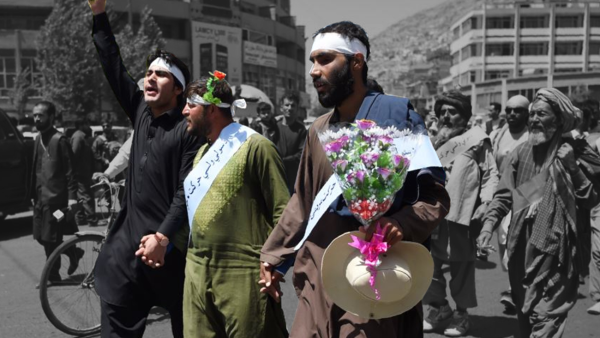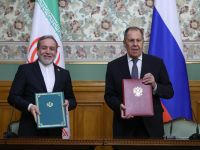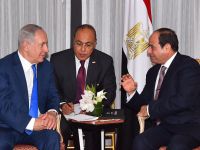Braving threats from the Taliban, 27 year-old Hafizullah went to his local polling station in Helmand in southern Afghanistan, to vote in his country’s parliamentary elections. When he left the station, he was found by militants who then cut off one of his fingers that had been dipped in blue dye to show he had voted: a punishment for taking part in Afghanistan’s fragile democratic process.
Hafizullah is one of millions of Afgans who, in late October, voted for the first parliamentary election held since 2010.
The fact that the election happened at all, and that people voted is a small miracle; a rare success in a country that’s been plagued by constant conflict since the late 1970s and a war that is growing deadlier than ever.
The war, however, has wrought more than just death, injury, trauma and destruction; it has created a generation of political engaged youth that seek peace and an end to corruption that has become endemic to Afghanistan’s politics.
While the youth voice has been one of the loudest and most compelling as of late, it has also been co-opted by local vested interests from the country's old guard who seek to maintain power.
Afghanistan's youth movements are a chaotic assemblage of parts, glued together by a cohesive desire for reconciliation and peace and foreign funding, while simultaneously being ripped apart by local power brokers and warlords, who promise access to power and resources.
They nonetheless represent the country's best hopes to reconcille itself and form a lasting peace.
The Uncanny Rise of Afghanistan’s Youth
Hafizullah in a hospital after being kidnapped by militants (Radio Free Europe, Twitter)
When the U.S. invaded Afghanistan in 2001, it not only brought a force that occupied strategic positions and began reconstructing Afghanistan’s military and politics, it also brought a massive influx of cash to jolt what looked to be a dead civil society back to life. Nevermind that Western observers failed to understand that local religious, tribal and shura councils actually constituted a vast and deeply connected web, one that signified a uniquely Afghani way of civil organizing before the invasion and occupation.
The U.S. and E.U. sent billions of dollars annually to Afghanistan as development aid, which rapidly expanded the number of non-governmental and civil society organizations in the country. At its peak, the U.S. and E.U. were sending nearly $6 billion in development aid annually to Afghanistan.
Before the invasion, there were only a few meandering NGOs; the Taliban kept a choke hold on much of civil society when it ruled. Just a year into the occupation however, there were 1,020 NGOs registered with the Kabul government, four or five times the number of NGOs in 2001.
That number has continuously risen throughout the war: as of early 2018, there were 4,338 NGOs registered listed in Kabul as well as 2,700 associations. Local councils and professional organizations have sprung up and been financed.
Many of the new organizations, associations and movements revolve around Afghanistan’s youth.
Afghanistan is a young country: about 55 percent are under the age of 20, and the vast majority are under the age of 40. It is also one that defines ‘youth’ in a slightly different way than most in Europe or the U.S. would expect: people as old as 35 still identify themselves as part of Afghanistan’s ‘youth,’ thinking that youthulness is reflected in one’s outlook and lifestyle rather than a number.
According to a 2014 U.S. Institute of Peace report, “More than jobs, schooling, and Internet accessibility in the villages, the viability of the nascent progressive youth politics in Afghanistan depends on ensuring stability above all else.”
This is reflected in the platforms of youth and civil society coalition groups, such as Afghanistan 1400, a youth movement aimed at recentering the fate of Afghanistan’s politics within the hands of its youth. 1400, in its own words, is “a civil and political movement aimed at mobilizing and creating a political platform for the new generation of Afghanistan. It will empower the new generation to partake in Afghanistan’s political, social and economic development. We seek to shape the present direction and to determine the future destiny of Afghanistan.”
It continues: “We are resolute to provide opportunities for the young citizens, as a majority and determining force, to have a strong and influential voice in the political, social and economic development of Afghanistan. We desire that that new generation is recognized today as the primary force in the current and future political arena of Afghanistan.”
In comes the October parliamentary election, which is significant for the youth for two reasons. First, for many engaged and young leaders, this was their first chance to vote or take part in a parliamentary election, and second, because it gave them a rare chance to alter Afghanistan’s politics, which is dominated by a powerful executive and a set of immovable tribal and ethnic leaders.
Boxes carrying ballots are carried by employees of the Independent Election Commission (IEC) (AFP/FILE)
“The youth engagement and energy in politics, manifested in the parliamentary election, is real,” Frances Z. Brown, a fellow at the Carnegie Endowment for International Peace, told Al Bawaba.
“The election is notable for the greater youth involvement in politics, however, and a generational shift. It has been eight years since the last Parliamentary election was held, and so during the previous Parliamentary election, much of this more urbane generation of millennials and Generation Z were still to young to vote, much less run.”
Candidates hoping to capture the youth vote throughout Afghanistan prominently featured ‘taghir’ as their platform; ‘change.’ One coalition of candidates was called “Taghir wa Omid,” or change and hope. One group of youth activists is called ‘Shabaka-ye Eslah wa Taghir,’ or Network for Reform and Change. More than 2,500 candidates campaigned throughout Afghanistan on similar such platforms, galvanizing voters with promises to reform the corrupt and bloated political system that has hampered Afghanistan for decades.
Posters for candidates in the parliamentary elections (AFP/FILE)
“The Parliament really matters, at least in theory, because it represents the one component of Afghan governance that could potentially expand the pie of Afghans who have a stake or feel represented, and the one component of Afghan government that presents a potential check on presidential authority,” said Brown.
However, the election itself was fraught with dangers and technical issues that made voting for many a life threatening logistical nightmare.
“You had many Afghans brave Taliban threats to come to the polls, many of whom were energized by a new crop of young, reformist parliamentary candidates,” said Michael Kugelman the Deputy Director and senior associate for the Woodrow Wilson Center’s South Asia Program.
“And yet when they arrived at the polling station, many were greeted with disorganization and chaos, which has heightened public disaffection with their government.”
The election, which was delayed from 2016 until 2018, was set to begin and end on Oct 20, but was extended for a second day while some regions postponed for a week. On the first day, over 400 polling stations were reported to be closed due to technical errors or security threats.
Armed militias forced some voters to cast their ballots for the militias’ preferred candidates, and the new biometric system for voting caused nationwide controversy for malfunctioning constantly. Some polling stations simply didn’t have enough ballots on hand, while others reported ballot stuffing.
The contentious southern province of Kandahar delayed its voting until Oct 27 after the Taliban killed General Abdul Raziq, a figure in the war against Afghanistan and the province’s intelligence chief.
In sum, almost 200 people were killed as they tried to vote by militias including the Taliban, who view the election as illegitimate. Ten candidates were assassinated on the campaign trail as well.
Nonetheless, “the simple fact that the elections happened is important, given that they had already been delayed twice and until recently many people thought they wouldn’t happen at all,” said Kugelman.
That millions would still opt to vote given the inefficiencies and dangers is an important moment for Afghanistan, one that showcases how important it is for the youth to engage in formal political avenues to seek power.
A Fragile, Co-opted Movement
Peace protestors hold up signs in Helmand, Afghanistan (AFP/FILE)
But much of that energy has been captured by Afghanistan's ruling elite, and manipulated to entrench the status quo rather than reform it.
Amid those touting slogans with ‘taghir,’ some were actually powerful figures of Afghanistan’s old elite, including members of former president Hamed Karzai’s administration and wealthy businessmen.
The leader of Shabaka-ye Eslah wa Taghir, who ran for a seat in Kabul is Muhammad Sangar Amirzada. Amirzada was a member of Karzai’s chief of staff office. Khan Muhammad Wardak, who also ran for a position in the capital city, campaigned with the slogan: “Khan Muhammad ta raya, musbat badlun ta raya,” which translates as “Vote for Khan Muhammad, vote for positive change.” Khan is the owner of Khan Steel, one of Afghanistan’s biggest companies.
The old guard of Kabul’s vested political and economic interests are gambling on riding the youth’s ‘anti-corruption’ wave in hopes of maintaining their notoriously corrupt stranglehold on the country.
“It's anecdotally true that many of the youth candidates were the offspring of the older guard of political and strongmen leaders,” said Brown.
The Afghanistan Analysts Network found that numerous candidates were either wealthy businessmen or children of mujahideen leaders. In addition, at least six are former ministers.
According to Frances Brown, “The boundaries in wartime Afghan society between government, civil society, and business are extremely permeable, so it's impossible to answer whether this election represents a cementing of civil society that is more engaged in politics. Unlike in other countries, the lines between those communities are murky or non-existent.”
There’s a material interest for youth and reform groups to attach themselves to the ‘old guard’ as well: even though they appear diametrically opposed to the corrupt old guard, youth groups still need the support of established and well-resourced power brokers to function and mobilize.
Taliban fighters pose with their weapons before handing them over in a government-mediated reconciliation deal in 2015 (AFP/FILE)
Youth groups gain access to local populations outside their immediate urban areas with ties to militias, warlords, and other powerful individuals; they also get armed protection and safe passage through contested areas and even institutional funding to work full time and occasional have office space. In return, youth groups offer those ‘old guard’ funders get some semblance of localized popular legitimacy.
One anonymous interviewee from Nangarhar, in eastern Afghanistan, explained that local leaders even manipulate or engineer their own respective youth groups to maintain their dominant positions vis-a-vis other leaders: “In Nangarhar, both [Gul Agha] Sherzai and Haji Zahir have their own youth groups, and these groups do what Sherzai and Zahir tell them. When Sherzai and Zahir argue, their groups take to the streets and protest against one another.”
In other words: some youth groups are simply a new tool the old guard of Afghanistan use to cynically maintain their positions in society. The USIP notes that “even as jihad-era political parties lose influence among provincial youth, the old style patron-client politics continue within the new generation.”
The political space the U.S. invasion of Afghanistan created for youth movements has also been co-opted by young Islamist groups, seeking to take advantage of the newfound freedom to navigate through civil society.
A Limited Window for Change
Protestors march from Helmand to Kabul (AFP/FILE)
Youth movements have felt compelled by the war to demand negotiations with the Taliban to end it once and for all, but it has also steadily led to donor fatigue and a withdrawal of international attention from the war-torn country. This is slowly jeopardizing their future, as they may find themselves increasingly contained to urban areas and desperate for funds.
The war is becoming a stalemate: the Taliban are slowly cementing their control over certain rural parts of the country while launching attacks into the cities. The government is increasingly confined to defending urban areas like Kabul and Herat. The rest of the country stands as a kind of no-man’s land, ruled by local interests and leaders. The war, meanwhile, is more deadly than ever: in 2017, over 10,000 civilians were killed according to the U.N. and experts expect the death toll to be higher in 2018.
This has spurred local Afghan civilians to take radical steps in calling for peace. After a car bomb killed and wounded 45 people in Helmand in March, family members of the victims began a sit-in, setting up tents and issuing demands to politicians. The sit-in quickly gained traction throughout half of Afghanistan's provinces thanks to support from grassroots and youth organizations and the resonance of their message. The sit-ins weren’t about specific ethnic or tribal ties, but a single idea: the violence has simply become too unbearable.
Using the momentum from the nationwide sit-ins, eight of the demonstrators in Helmand walked more than 300 miles to Kabul to petition the government to stage peace talks with the Taliban. By the time they arrived in the capital city, their numbers had swelled to more than 100 people, many of them barefoot; some were hospitalized for blisters and dehydration.
Then, they walked to Mazar, 200 miles north to generate more support. Through their trek, they marched through Taliban-held land, where they were subject to threats from the militant group to stop.
“We met Taliban fighters and, after an introduction, they told us we shouldn’t have come here because the area is planted with bombs, and they had planned an attack,” one of the protesters said. “After minutes of discussion with them, they seemed tired of it all, and the war. They directed us back to the safest area.”
“Afghanistan is a good place without war,” said another, who was raised in Helmand but was forced to leave when the Soviet Union invaded in the 1980s.
“War is ugly… We want peace at any cost.”







